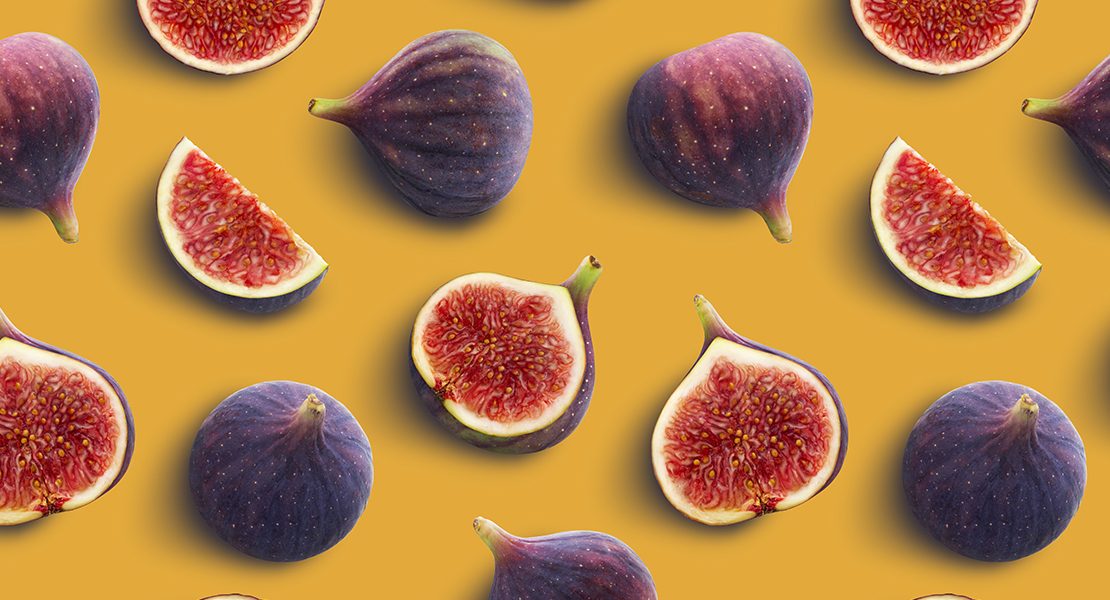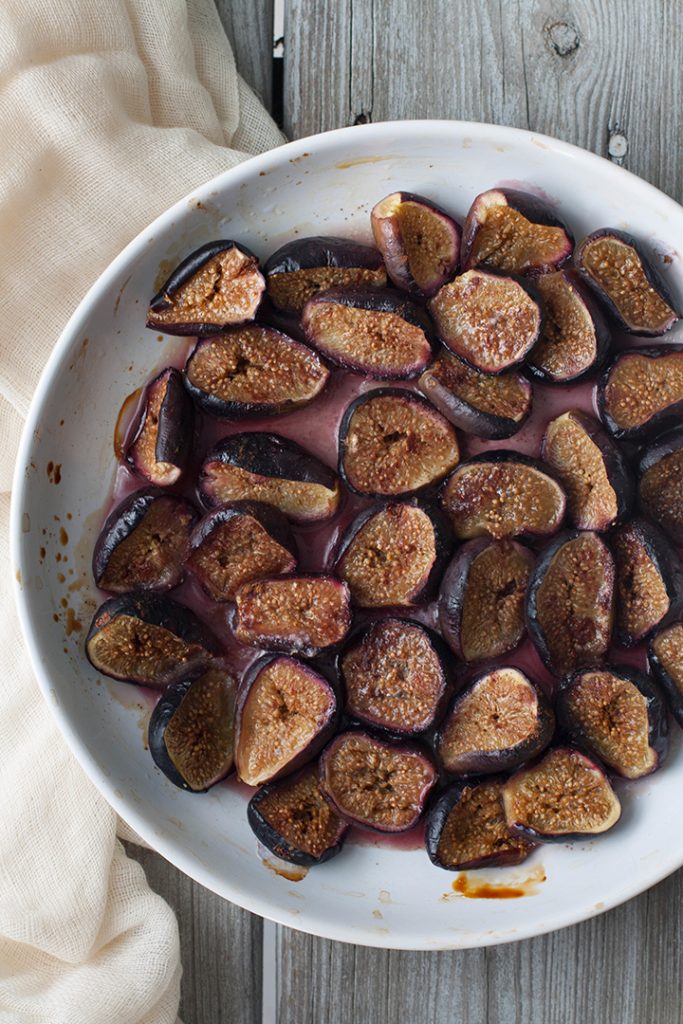Figs

September Marks The Seasonal Peak Of The Fig
Venture beyond the Fig Newton cookie for an au naturel experience with these plump and juicy little treats. From the chewy skin—ranging from deep purple or ruddy brown to bright chartreuse, depending on the variety—to the pulpy, rosy-hued flesh flecked with miniscule seeds, figs offer culinary versatility. “The taste of a fig is very robust and flavorful. There’s not a lot of things you can compare them to, and they go with so many things,” says Corporate Chef Christopher Heath of Paxos Restaurants. “A European-centric way of eating figs is with prosciutto. The fattiness and richness of the pork goes so well with the freshness of the fig.” Roasting, though, remains his favorite approach to figgy bliss. A sweetly-tart glaze scented with earthy spices makes this dish a suitable partner to grilled salmon, pork tenderloin medallions, roasted duck, and much more. For an easy-yet-impressive dessert, poach figs in wine and dollop with mascarpone, yogurt, or whipped cream.
Because figs ripen best on the tree, choose a quality purveyor with a quick supply chain.
At Whole Foods Market in Allentown, Elyse Suter, produce assistant team leader, notes that about 90% of their organic figs arrive from California. (In the mid-1700s, Franciscan monks from the Mediterranean region introduced Black Mission figs to this amenable clime.) Since the shelf life of figs at the store is only 1 to 1 1/2 days, consume them quickly to avoid vegetable drawer coma.
Growing figs successfully in the Northeast can be accomplished with a little extra care. Young trees grown outdoors in pots should be invited to live inside (or at least in the garage) during their first few winters. At Pharo Garden Centre in Bethlehem, owner Ray Steidinger stocks several types in spring, including Chicago Hardy, a cultivar noted for superior cold tolerance. When planting trees in-ground, look for a spot near a relatively warm cement house foundation—with plenty of sun. Trees can also be wrapped in burlap during winter.
Tony Galanti and Marty Stillwell, avid amateur horticulturalists in East Greenville, have a large clan of indoor and outdoor Brown Turkey fig trees, all propagated from a “starter” tree. As a fifth-generation fig grower—traditional in many Italian-American families—Galanti reports they never tire of the fruits of their labor, especially prepared in his nonna’s preferred style: Sliced, drizzled with olive oil, and topped with ground pepper. Simplicity rules.
ROASTED FIGS
INGREDIENTS
10 fresh figs
1 T orange zest
2 oz. honey
2 cinnamon sticks
3 pieces star anise
Juice of 1 orange
Juice of 1 lime
Juice of 1 lemon
Splash of balsamic vinegar
Splash of red wine
Salt and pepper
DIRECTIONS
Make a shallow X-shaped cut at the top of each fig. Starting from the bottom, gently squeeze each fig to distribute the pulp evenly, without forcing any fruit from the cut. Arrange figs in a lightly greased baking dish. Add the remaining ingredients evenly over the top, ending with a light sprinkling of the salt and pepper. Place in an oven preheated to 450°F and bake for about 12 minutes, until figs are softened but still hold their shape. Serve as an accompaniment to grilled salmon, pork tenderloin medallions, or any other meat that benefits from a beautiful balance of sweetness and acidity.
Yields 10 figs
From Corporate Chef Christopher Heath,
Paxos Restaurants














